

Tuning Fork
1806: Englishman Thomas Young records the vibrations of a tuning fork on a rotating drum covered with wax but Young has no way of playing back the sound.
1856: Alexander Parkes develops ’Parkesine’ in Birmingham, UK. This is generally considered to be the first plastic.
1857: Frenchman Leon Scott de Martinville converts air pressure fluctuations caused by sound into an undulating line on a sooty surface by way of pig’s hair, a large horn and a diaphragm but has no method of playback, he names this the ‘Phonoautograph‘.
1857: Hermann von Helmholtz notices that he can make the music strings in his piano vibrate when he sings into it. He then causes a tuning fork to vibrate and produce sound by switching an electromagnet on and off. This principle is the basis of the audio speaker.
1874: W.H. Barlow builds The Logograph, this creates a graphic representation of the sound vibrations produced by speech.
1876: Alexander Graham Bell invents the telephone which spurs on other sound devices.
1877: The first disc records are described as part of a sound recording and reproduction device by Charles Cros of France, this is never built.
1877: Through experimenting with an early type of answerphone, Thomas Edison runs paraffin coated paper under a stylus while shouting into a telephone speaker, the vibrations leave a faint impression of his voice which can be played back. He soon replaces the paper with a rotating drum coated in tin foil which runs underneath the stylus. A clearer speech like noise emanates which gives Edison the idea to be able to record and also play back a sound source – Mary had a little lamb. Later that year he builds the first Phonograph choosing the rotating drum over flat discs as a format.
1877: E.W. Siemens in Germany and the team of Cuttris and Redding in the U.S. develop the dynamic microphone. In this device, the diaphragm is attached to a light coil that generates voltage through electromagnetic induction as it moves back and forth between the poles of a permanent magnet.
1881: Charles Tainter makes the first lateral-cut records in the Volta laboratories of Alexander Graham Bell in America – still no method of playback for disc records.
1883: Thomas Edison accidentally discovers what comes to be known as the Edison Effect which later become the basis of the electron tube, and the foundation of the electronics industry in the 20th century.
Early Gramophones
(Top left, a hand-driven Berliner gramophone from 1893, top right, an Edison Bell phonograph made in 1904. Bottom left is a Columbia gramophone. Bottom right, a Berliner toy gramophone from 1890)
1885: Chichester Bell and Charles Tainter build an improved phonograph at Volta Lab, it uses a wax coated cylinder scored with vertical-cut grooves, they name it the “Graphophone“.
1887: Edison uses a solid wax cylinder in the phonograph, a battery-driven motor now powers the machine instead of the hand crank system resulting in a constant pitch.
1888: Emile Berliner perfects playable 7″ Lateral-cut disc records as the format for his “Gramophone“, these discs are initially only used in toys, the vulcanised rubber discs are easy to reproduce from the zinc master which is coated in wax. – Around this time Edison and Bell are at constant legal war over patent disputes.
1889: Columbia Phonograph Co. is founded. The company tries marketing graphophones to businesses but later finds better revenue by recording music and leasing them to fairgrounds, where they find great favour as the first nickel juke boxes.
1890: Phonograph cylinders can now record audio up to a maximum of 4 minutes and juke boxes become a powerful commodity in the music industry.
1894: Berliner’s American Gramophone company sell many electric and hand powered Gramophones, manufacturing thousands of disc records to go with them. In this year an early form of Radio is invented in Italy by Guglielmo Marconi.
1896: A spring motor is added to the gramophone by Eldridge Johnson in New Jersey, U.S.A., this allows better ‘hands free’ power capabilities and portability.
(A Victrola Gramophone, courtesy of kevin in Canada)
1897: Vulcanite playback discs are superseded by Shellac discs which are part made from a species of Beetle.
1902: Ten inch disc records (10″) are made by the Gramophone Company and begin to feature many different international artists, these have a maximum play time of 4 minutes and are known as “Red Seal”.
1903: Twelve inch records (12″) are made (later to be become the standard dance music record release size).
1904: Double sided disc records become popular.
1906: The Victrola gramophone is designed by Eldridge Johnson and mass produced, it becomes a bench mark for record players for many years, appearing as a piece of furniture with the mechanism hidden from view, the record player becomes an acceptable piece of household furniture.
1912: Thomas Edison introduces the Blue Amberol cylinder which has a longer playing time than Berliners records but the recordings prove difficult to reproduce. In this year the ‘Audion’ vacuum-tube amplifier is invented.
1917: The first Jazz record is recorded by the Original Dixieland Jass (Jazz) Band from New Orleans.
1918: The patents for the manufacture of lateral-cut disc records expire, other companies produce them and disc records become more popular than the cylinder format. In this year the first ever sounds of war are recorded – a gas shell bombardment.
Production of Amberol cylinders ceases in the late 1920s and cut disc records govern the music market.
1925: Electrical amplification is used for recording and playback of discs offering a better frequency range for the audio.
1926: A lightweight piezo-electric stylus is designed by Charles Brush.
1927: The automatic juke box goes on sale.
1928: Pioneering work into what is later to become known as ‘Television‘ is carried out on ‘Phonovision’ wax discs by John Baird.
1930: RCA Victor launches the first commercially available vinyl long-playing record, marketed as Program Transcription discs. These discs are designed for playback at 33 rpm and pressed on a 30 cm diameter flexible plastic disc. This is a commercial failure because of lack of affordable, reliable playback equipment and the Great Depression in America, not to mention the rising popularity of ’Radio’ (which is free).
1931: Harvey Fletcher, Arthur C. Keller and Leopold Stokowski manage to record and transmit monaural and binarual sound in the Academy of Music in Philadelphia. At the same time Alan Dower Blumlein files a patent application in for stereo recording in Britain.
1932: The first stereo disc is recorded by Stokowski at Bell labs in Philadelphia using vinyl rather than shellac, initially two separate grooves are made for each channel but Arthur Keller later creates a stereo recording in one groove.
By the mid 1930s vinyl achieves a lower surface noise than shellac, radio commercials and programs are sent to disc jockeys (a term earned through jockeying up the next record) on the less brittle vinyl to avoid breakage in the mail, also World War II leads to short supplies of shellac. V-Disc produces 12″ 78 rpm records on vinyl for US troops and 16″ records for radio transcriptions.
Early Record Sleeve
Record collections are held in paper sleeves in a cardboard or leather book, similar to a photograph album, and called record albums (some claim this term arrived as early as 1909). Vinyl records are sold in paper or printed card sleeves for protection, generally with a circular cutout allowing the record label to be seen.
1939: Columbia Records continue extensive development of the record to to improve recording and playing back concentrating on narrower grooves and developing an inexpensive, reliable consumer playback system, by the mid 1940s, 78 rpm vinyl is the DJs choice cut. Magnetic Tape is invented in this year.
1940: Mobile DJs become popular around the world as entertainers for military troops during WWII, however they still only use a single record player.
Mobile Record Player
1943: Jimmy Savile launches one of the world’s first DJ dance parties playing jazz records in an upstairs function room.
1947: One of the first people to use twin turntables for continuous play is British DJ and T.V. personality Jimmy Savile, Jimmy pays a metalworker to weld two domestic record decks together for more continuous play at his dance parties in Leeds. This style of ‘twin-deck’ DJing utilising a microphone for talk over becomes industry standard.
1947: The “Whiskey-A-Go-Go” opens in Paris playing popular records, this is considered by some to be the very first disco.
1948: Columbia Records introduce the 12″ vinylite Long Play (LP) 33 rpm microgroove record album at a New York press conference. (often referred to as 33 rpm)
1949: RCA Victor release the first 45 rpm single in response to Columbia, seven inches (7″) in diameter, with a large center hole to accommodate automatic play mechanisms, a stack of singles can drop down one record at a time automatically after each play. Early 45 rpm records are made from either vinyl or polystyrene.
Both types of new disc used narrower grooves, intended to be played with a smaller stylus than the 78 – the new records were sometimes called Microgroove.
Early 45 Player
1948 to 1950: Record companies and consumers face uncertainty over which of these formats will prevail in what becomes known as the War of the Speeds.
On a small number of early phonograph systems and radio transcription discs, as well as some entire albums, the direction of the groove is reversed, beginning near the centre of the disc and leading to the outside. Jamaican R&B Sound Systems become popular also.
1950s: By the mid-50s all record companies agree to a common recording standard called RIAA equalization. Prior to this each company uses its own preferred standard, requiring listeners to use preamplifiers with multiple selectable equalization curves.
A number of recordings are pressed at 16 RPM, but these are mostly used for radio transcription discs or narrated publications for the blind, some turntables with a 16 RPM speed setting are produced as late as the 1970s.
The older 78 format continue to be mass produced alongside the newer formats into the 1950s, and in a few countries, such as India, into the 1960s. As late as the 1970s, some childrens records are released at the 78 rpm speed.
Eventually the 12″ 33 rpm LP prevails as the main format for musical albums, and the 7″ 45 rpm disc or single finds it niche as a shorter duration disc, usually containing one song on each side and both in stereo sound. The 45 rpm discs emulate the playing time of the former 78 rpm discs, while the LP discs provided up to one half hour of time per side. The 45 rpm discs also come in a variety known as Extended play (EP) which achieved up to 25 minutes play at the expense of attenuating (and possibly compressing) the sound to reduce the width required by the groove.
60s Record Decks
From the mid-1950s through the 1960s, in the US the record player or stereo typically has these features: a three- or four-speed player with changer a combination cartridge with both 78 and microgroove styluses; and some kind of adapter for playing the 45s with their larger center hole. The large center hole on 45s allows for easier handling by jukebox mechanisms. RCA 45s can also be adapted to the smaller spindle of an LP player with a plastic snap-in insert known as a ‘spider‘.
1960-1970s: During the mid 60’s Pirate Radio appears entertaining a younger ‘hipp’ audience.
Beatmatching is invented by Francis Grasso in the late 1960s and early 1970s by counting the tempo with a metronome and looking for records with a similar tempo. Later a mixer is built for him by Alex Rosner which allows him to listen to any channel in the headphones independently of what is playing on the speakers; this becomes the defining feature of DJ mixers. This and turntables with pitch control enable him to mix tracks with different tempos.
Technics 1210 turntable courtesy of Brent K
The first Technics SL-1200 turntable is released in 1974, this evolves into the SL-1200MK2, released in 1978, with a comfortable and precise sliding pitch control and high torque direct drive motor makes beat matching easier and turns it into the industry standard among DJs.
Vinyl records remain the DJs choice and a suburb of New York called The Bronx becomes a catalyst for a new musical phenomena hip hop (sometimes referred to as ‘turntablism‘).
DJ Kool Herc starts using two copies of the same record to extend break downs in records during 1973, rappers later toast and rap stories over extended funk and disco breakbeats and in 1977 DJ Grand Wizard Theodore develops scratchingthrough the rewind and Que of the next record, the DJ finds a sound and runs the needle back and forth using the record and turntable to create a scratch noise.
1980s-Present: Vinyl records are superseded by Compact Disc as a popular consumer format, these new formats supposedly reproduce better playback quality and are easier to handle being easily adapted to play in car stereos and Walkmans.
Major record labels almost completely cease to release vinyl records, concentrating more on digital formats but vinyl is kept alive by dance musicians and DJs.
Vinyl Records courtesy of Iyers
Some Hi Fi stereos continue to be manufactured with with a turntable on top, electronics manufacturers also continue to develop and improve separate turn tables for record enthusiasts and DJs, the second hand vinyl market remains popular amongst “crate diggers“.
The availability of computers allows digital formats to reign, such as MP3, this leads to a decrease in sales for the CD, however various DJ turntables now appear as hybrids, allowing playback of more than one format.
Several high street chain record stores begin to stock vinyl albums and 7″ singles again with an increasing number of both download and vinyl record stores appearing online.
News stories continue to come and go about the resurgence of vinyl records, and the story of the vinyl record rambles on…
Article originally by Simon Lucas
via
http://www.blogaboutmusic.co.uk/








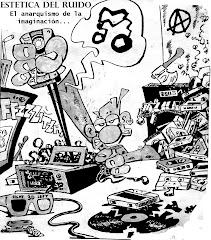

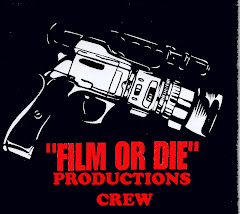



































































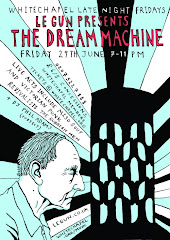









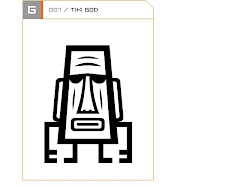



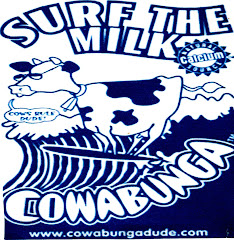


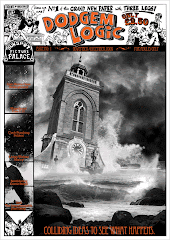




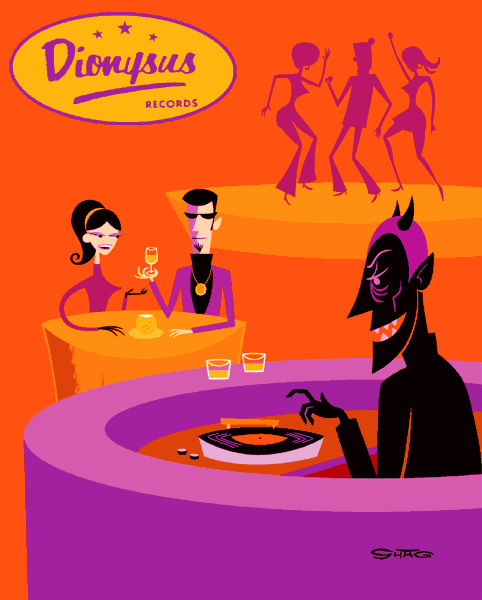
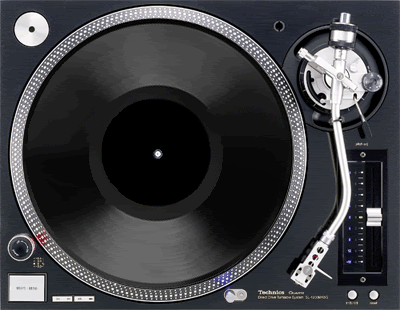





















No comments:
Post a Comment